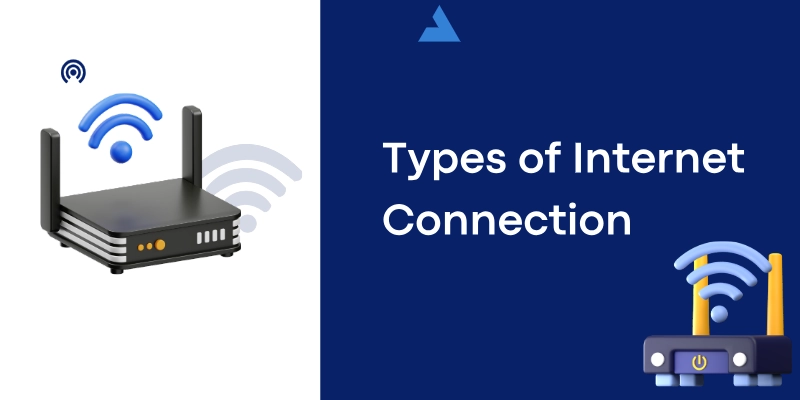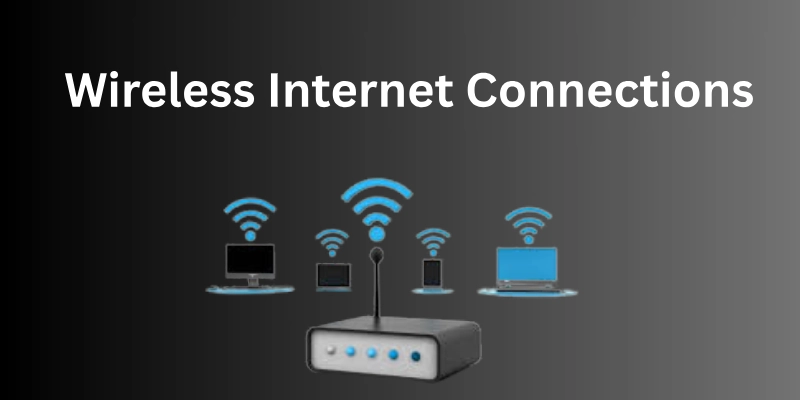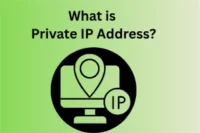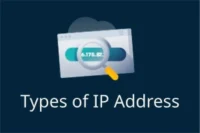Types of Internet Connection in Computer: Full Guide
Published: 21 Aug 2025
In today’s digital age, staying connected to the internet is essential for everything from education and work to entertainment and communication. However, there are different types of internet connection in computers, and each works in its own way. Choosing the right one depends on speed, reliability, and availability.
In this guide, we’ll explore the common types of internet connection, real-world examples, and how to pick the best option for your needs.
What Is an Internet Connection?
An internet connection allows your computer or device to access the global network, enabling browsing, email, streaming, and countless other activities. Internet services are delivered through different technologies, including wired (cables, DSL, fiber) and wireless (Wi-Fi, cellular, satellite).
Understanding these types of network connection in computers helps you decide which one suits your requirements best.

Wired Internet Connections
The following are the main types of Wired Internet Connections commonly used in computers.
Dial-Up
Dial-Up was one of the earliest types of internet connection in computers. It works by using a standard telephone line and a modem to connect to the internet. Although very slow and outdated today, it played a big role in the early days of getting connected online.
- Description: One of the earliest types of internet connection, dial-up uses a telephone line to connect.
- Speed: Extremely slow (up to 56 kbps).
- Limitation: Cannot use phone and internet at the same time.
- Status: Largely outdated today, but still an example of internet connection in computer history.
DSL (Digital Subscriber Line)
DSL is a type of internet connection that uses existing telephone lines to provide always-on access. It is much faster than Dial-Up and allows you to use the phone and internet at the same time.
- Description: Uses telephone lines but offers faster, always-on connectivity.
- Speed: 256 kbps to 100 Mbps.
- Advantage: Can use phone and internet simultaneously.
- Common in: Urban and suburban areas.
Cable Internet
Cable internet delivers connectivity through the same coaxial cables used for television services. It offers higher speeds than DSL, but since bandwidth is shared, performance can drop during peak usage hours.
- Description: Delivered via the same coaxial cables as television.
- Speed: Up to 1 Gbps depending on provider.
- Downside: Shared bandwidth—speed may reduce during peak hours.
Fiber-Optic Internet
Fiber internet uses thin strands of glass or plastic to transmit data as light signals. It provides extremely fast speeds with low latency, making it the most reliable option for modern internet usage.
- Description: Uses fiber-optic cables to transmit data at light speed.
- Speed: Up to 10 Gbps.
- Pros: High speed, reliability, and low latency.
- Cons: Limited availability in some regions.
Satellite Internet
Satellite internet connects your computer to the web using signals sent to and from satellites in space. It’s widely available in rural or remote areas, though it can be slower with higher latency compared to cable or fiber.
- Description: Connects via satellites orbiting the Earth.
- Advantage: Available in remote or rural areas where other options fail.
- Drawback: Higher latency; slower than fiber or cable.

Wireless Internet Connections
Wi-Fi
Wi-Fi is a wireless technology that connects computers and devices to the internet through a router. It’s one of the most common and convenient options for homes, offices, and public spaces.
- Description: Uses a router to provide wireless connectivity at home, schools, and offices.
- Pros: Convenient, supports multiple devices.
- Cons: Range limited by router’s strength.
Cellular Data (3G, 4G, 5G)
Cellular internet works using mobile networks, allowing computers to connect through SIM cards, hotspots, or dongles. With 4G and now 5G, speeds are much faster, making it a flexible and portable option.
- Description: Uses mobile networks to connect computers through hotspots or dongles.
- Advantage: Portable and accessible almost anywhere.
- Speed: 3G (slow), 4G (fast), 5G (ultra-fast, low latency).
Fixed Wireless / WiMAX
Fixed wireless internet uses radio signals instead of cables to deliver connectivity. It’s mainly used in rural or underserved areas where wired options like DSL or fiber are not available.
- Description: Provides internet without cables using radio signals.
- Best for: Rural and underserved areas.
Wired vs Wireless: Quick Comparison
| Feature | Wired Connections (DSL, Cable, Fiber) | Wireless Connections (Wi-Fi, Cellular, Satellite) |
| Speed | Faster (especially Fiber) | Variable, depends on signal |
| Reliability | High (stable connection) | Can fluctuate with interference |
| Mobility | Limited to location | Highly portable |
| Cost | Moderate to high | Varies; mobile data can be costly |
| Best For | Gaming, streaming, remote work | Travel, mobile use, rural access |
How to Choose the Right Internet Connection
When deciding among the different types of internet connection, consider:
- Location: Fiber may not be available everywhere.
- Purpose: Heavy tasks (gaming, remote work) need stable, fast connections.
- Budget: DSL and cable are affordable; fiber costs more but offers the best performance.
- Mobility: If you need flexibility, wireless internet services in computers (like cellular) are better.
Real-World Examples
- A student using DSL at home for online classes.
- A family using fiber-optic broadband for streaming movies on multiple devices.
- A traveler relying on cellular data for connecting to the internet.
- A farmer in a rural area using satellite internet.
Conclusion
There are many types of internet connection in computer, each with unique pros and cons. From dial-up and DSL to modern fiber and 5G, the right choice depends on your needs, budget, and location.
By understanding the different types of internet connection and their real-world examples, you can make a smarter decision and stay efficiently connected to the internet.
💬 Got questions or thoughts? We’d love to hear from you!
Drop your comments below and share your experience with internet connections. Stay connected! 🌐✨
FAQs
The following are some frequently asked questions (FAQs) about internet connections, their types, and usage to help you better understand your options.
The most common types include DSL, cable, fiber-optic, Wi-Fi, cellular (3G/4G/5G), and satellite. Each type has its own speed, reliability, and coverage depending on your area.
Yes, you can use wired connections like DSL, cable, or fiber. Additionally, mobile data via USB dongles or personal hotspots also allow internet access without Wi-Fi.
Fiber-optic internet is currently the fastest and most reliable option, offering speeds up to 10 Gbps with low latency. It’s ideal for heavy streaming, gaming, and remote work.
Dial-up is mostly obsolete today but may still be used in extremely remote or underdeveloped areas where modern infrastructure hasn’t reached yet.
Wired internet uses physical cables like DSL or fiber, providing stable and faster connections. Wireless internet uses signals (like Wi-Fi or cellular), offering more mobility but may be less reliable.
Yes, you can use your phone’s mobile data by turning on the hotspot feature or connecting it via USB tethering to share the internet with your computer.
Fiber-optic is the best choice for gaming due to its high speed and very low latency. Cable internet is also suitable, but wireless options may cause lag or disconnections.
Satellite internet can handle video streaming, but high latency and data limits may affect quality. It’s better suited for basic use in rural areas with no other options.
You can check through your internet service provider’s website, your router settings, or contact customer support. The cable type or modem used can also indicate the connection type.
5G offers faster speeds than traditional Wi-Fi in some cases, especially in mobile use. However, home Wi-Fi (with fiber or cable) usually provides better consistency and unlimited data.

- Be Respectful
- Stay Relevant
- Stay Positive
- True Feedback
- Encourage Discussion
- Avoid Spamming
- No Fake News
- Don't Copy-Paste
- No Personal Attacks

- Be Respectful
- Stay Relevant
- Stay Positive
- True Feedback
- Encourage Discussion
- Avoid Spamming
- No Fake News
- Don't Copy-Paste
- No Personal Attacks





